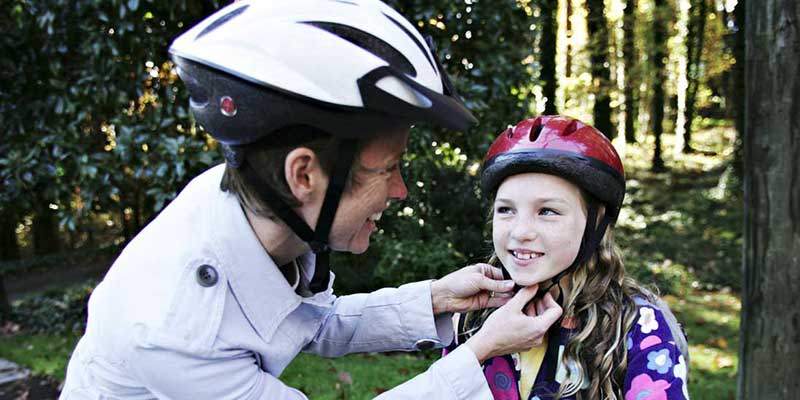Biycling is a fun and healthy way to spend time with your child and the best way to gauge your child’s bicycling skills and judgment. Consider the following three steps before your child rides to school.
1. Do a bike and helmet check
• Bike fit: When sitting on the bike with feet on the pedals, there should be a slight bend in the knee when the pedal is closest to the ground.
• Bike visibility: The bike should have reflectors on the front, back,
and both wheels. If riding when it’s dark or nearly dark, there should
also be lights on the front and back.
• Helmet fit: Take the helmet fit test (see sidebar).
2. Assess and build skills
If you don’t already ride together regularly, take your child to a quiet
parking lot or empty street to assess and teach basic skills. Children (and bicyclists of all ages) need to know how to do the following things:
3. Plan the route and try it out
Work with your child to pick the route to school and practice riding the route together.
• Choose streets with minimal traffic and lower speeds, and look for routes where you can ride separate from traffic using a path or bicycle lane.
• Limit the number of street crossings, and avoid crossing busy or high-speed streets. Talk with your child about whether it’s okay to ride alone, with friends, or only when an adult is on the ride. Children under age ten generally do not have the ability to manage traffic situations on their own, and may be safest riding on the sidewalk or a bike path. Some communities do not permit children to ride on the sidewalk, so check before making a decision.
Take the helmet fit test
Put your helmet flat on your head. If it moves when you shake your head, you need to tighten your helmet or get a smaller one.
CHECK:

Eyes: The helmet should sit low on your
forehead – two finger widths above
your eyebrows.

Ears: With the helmet buckled, the straps
should meet just below the ears.

Mouth: When buckled, you should be able
to fit no more than two fingers between
the buckle and chin.

